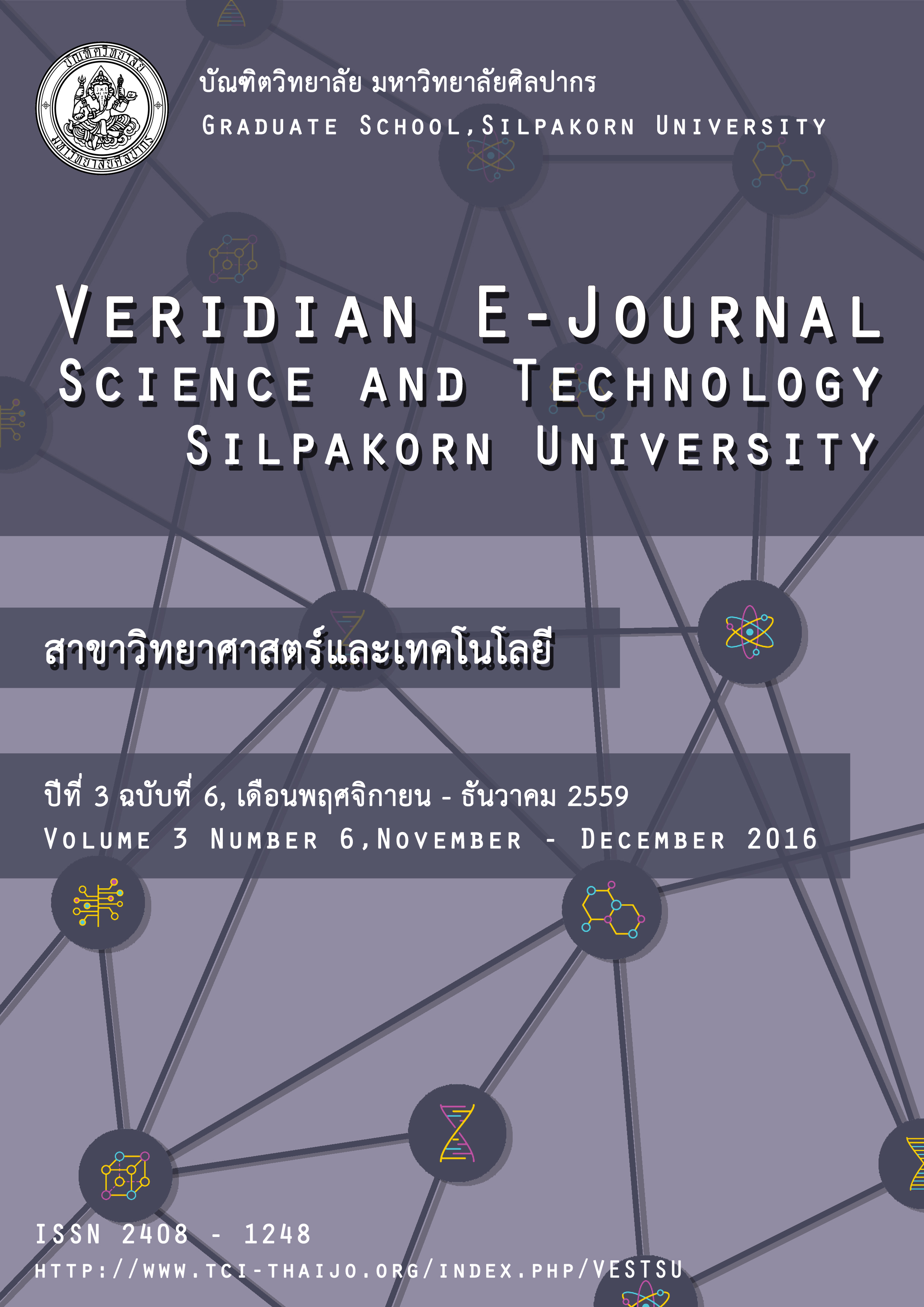ผลของความเค็มต่อปริมาณสารประกอบฟีนอลิก แอนโทไซยานิน และฤทธิ์การต้านอนุมูลอิสระ ของข้าวกล้องงอก
Main Article Content
Abstract
ข้าวกล้องงอกมีสารออกฤทธิ์ทางชีวภาพที่มีฤทธิ์ต้านอนุมูลอิสระสำคัญ คือ สารประกอบฟีนอลิก และแอนโทไซยานินในปริมาณที่สูงกว่าข้าวกล้องและข้าวขาวขัดสี และความเค็มมีผลต่อการสังเคราะห์และสะสมสารดังกล่าว ดังนั้นงานวิจัยนี้จึงมีวัตถุประสงค์เพื่อศึกษาผลของระยะเวลาในการแช่เมล็ดข้าวกล้อง และผลของความเค็มต่อปริมาณสารประกอบฟีนอลิก แอนโทไซยานิน และฤทธิ์การต้านอนุมูลอิสระของข้าวกล้องงอก โดยทำการเปรียบเทียบผลของความเค็มจากเกลือโซเดียมคลอไรด์และเกลือแกงในข้าว 3 พันธุ์ ได้แก่ ปทุมธานี 1 (PT) หอมนิล (HN) และไรซ์เบอรี่ (RB) ผลการทดลองพบว่าข้าวกล้องงอกพันธุ์ HN และ RB ซึ่งเมล็ดมีสีม่วงดำมีปริมาณสารประกอบฟีนอลิกรวมและแอนโทไซยานินสูงกว่าข้าวพันธุ์ PT ซึ่งเมล็ดมีสีขาว โดยปริมาณสารออกฤทธิ์ทั้งสองเพิ่มขึ้นตามระยะเวลาที่แช่เมล็ด ความเค็มจากเกลือแกงมีผลเพิ่มปริมาณสารออกฤทธิ์ทางชีวภาพในเมล็ดข้าวกล้องงอกได้เช่นเดียวกับเกลือโซเดียมคลอไรด์ โดยการแช่เมล็ดข้าวกล้องในสารละลายเกลือแกงความเข้มข้น 2 ช้อนชาต่อลิตร (12.95 กรัม/ลิตร) เป็นเวลา 24 ชั่วโมง ทำให้ข้าวกล้องงอกพันธุ์ HN มีปริมาณสารประกอบฟีนอลิกรวม แอนโทไซยานิน และฤทธิ์การต้านอนุมูลอิสระสูงสุดอย่างมีนัยสำคัญ เท่ากับ 0.894±0.135 mg GAE/g FW, 17.256±3.857 mg/L และ 8.543±1.283 µmol Trolox/g FW ตามลำดับ ดังนั้นการแช่เมล็ดข้าวกล้องในสารละลายเกลือแกงก่อนนำไปหุงเพื่อบริโภค เป็นอีกวิธีหนึ่งที่สามารถช่วยเพิ่มคุณค่าทางอาหารของข้าวกล้องได้
Germinated brown rice (GBR) has antioxidant bioactive compounds, such as phenolic compounds and anthocyanin, more than those of white rice. Salt stress affects the synthesis and contents of those compounds. Therefore, this study aimed to examine the effect of soaking time and the effect of salt stress on total phenolic contents, anthocyanin contents and antioxidant activity in GBR. The comparative study of salt stress from household salt and sodium chloride (NaCl) was performed in rice cultivar Pathum Thani 1 (PT), Hom Nil (HN) and Riceberry (RB). The results showed that the black-purple rice (HN and RB) has more phenolic compounds and anthocyanin than the white rice (PT). Those bioactive compounds increase along with the soaking time. Salt stress from household salt can be used to induce the accumulation of bioactive compounds in GBR as well as NaCl. Soaking HN seeds in household salt solution (2 tsp/L or 12.95 g/L) for 24 hours significantly increased the highest contents of phenolic compound and anthocyanin and increased the antioxidant activity by 0.894±0.135 mg GAE/g FW, 17.256±3.857 mg/L, and 8.543±1.283 µmol Trolox/g FW, respectively. Thus, soaking rice seeds in household salt solution before cooking could be a method to increase the nutritional value of rice.

